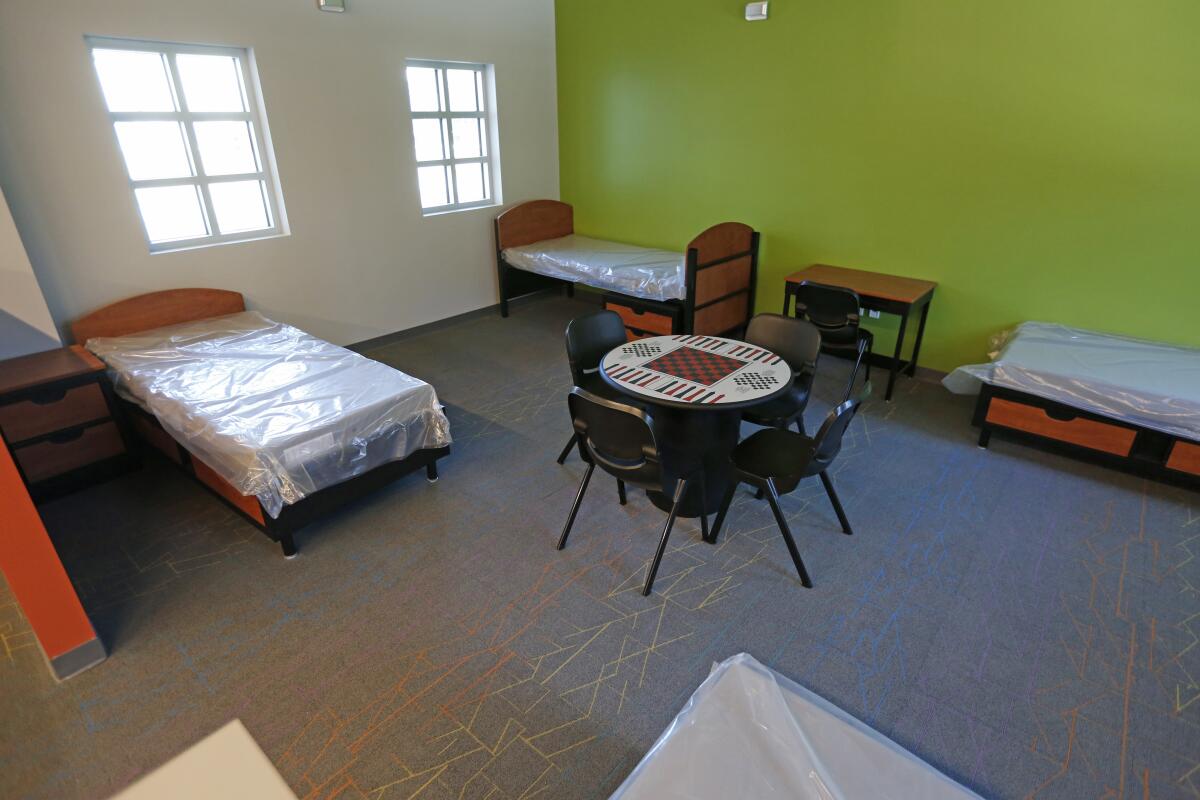L.A. County’s mishandling of Care First model is a cautionary tale for Gov. Newsom

- Share via
Care First, as the term is used in Los Angeles County government, refers to a reorientation of the county’s vast array of programs away from jail. It’s a solid notion. Incarceration is the traditional centerpiece of the county’s public safety response, and its failure rate is astounding. Most people who leave L.A. County’s jails, juvenile halls and probation camps will be back — or else headed to state prison or into homelessness.
The jail-centered approach is not merely wasteful. It’s obscene that the county government, which is responsible for providing mental health care, substance abuse treatment, poverty alleviation, and to some extent education and housing, responds to the needs of the most marginalized people with jail. Those programs ought to form the county’s primary response to the dysfunctional behavior that lands so many adults and juveniles behind bars. Jail, juvenile halls and probation camps should be last resorts. For those who nevertheless must go to jails and camps, Care First programs like therapy and rehabilitation ought to take precedence over punishment.
The Board of Supervisors adopted a Care First, Jails Last program several years ago and is now attempting to flesh it out. But too often it has floundered, especially in the juvenile system.
Los Angeles County government’s unconscionable floundering endangers the lives of the teenagers the county is duty-bound to protect
Failure and neglect of the sort that currently afflicts the county’s juvenile justice system, where probation officers don’t bother coming to work and juveniles sit for days with nothing to do but play video games, is a huge gift to opponents of the Care First concept. It allows opponents to argue that the Care First approach — rather than inept management, irresponsible labor sickouts and inattention from the Board of Supervisors — is responsible for the chaos at the halls and camps.
It gives critics ammunition to lob at other promising programs too, including some outside the county.
For example, on Friday, Gov. Gavin Newsom announced his intention to transform San Quentin State Prison into a rehabilitation center, modeled on practices developed in Norway and Sweden. It’s the correct, pragmatic move. But in describing the program, Newsom uttered a line that was unintentionally ominous because it’s a reminder of L.A. County’s failures.
“I don’t refer to it as a Scandinavian model,” Newsom said of the proposed San Quentin makeover. “This is the California Model.”
Here’s the problem. More than a decade ago, Los Angeles County won state funding to tear down a decrepit juvenile probation camp called Camp Vernon Kilpatrick and build in its place a costly new facility designed around a non-punitive therapeutic and rehabilitative juvenile justice model developed in Missouri.
We don’t refer to it as the Missouri Model, county officials said. This is called the L.A. Model.
But Probation Department labor contracts and other roadblocks swallowed up the L.A. Model, which now exists in name only. The costly new Campus Kilpatrick might have been a valuable proof of concept for the new San Quentin and the California Model. Instead, L.A.’s inability to match its lofty vision and costly construction with determined follow-through provides a reminder that follow-through is not automatic. It is crucial for success on similar projects, including Newsom’s.
The systemic problems at the Los Angeles County Probation Department’s Juvenile Division will not be solved by merely replacing one more department chief.
If the Care First model is to survive in Los Angeles County or elsewhere, the Board of Supervisors needs to do better. On Tuesday, it’s considering whether to recommit to Care First principles, like decarceration whenever possible. That’s a good move. But can the supervisors ensure that minors released from juvenile halls and probation camps will be guided and supported at home? Are they ready with teachers, therapists, mental health clinicians? Do they have supportive services for families to deal with their troubled teenagers? Will they monitor, in real time, the various transfers of juveniles and reconfigurations of facilities the board is considering?
Or instead will it be another iteration of the real L.A. Model? Strong in theory, a failure in execution.
If the supervisors intend to rescue their juvenile probation program they had better succeed this time, because the costs of another failure would be enormously high. If juvenile halls and probation camps continue not to meet health and safety standards, they must close, and the youths must be transferred farther away from their families. And all the other Care First programs, including plans to close Men’s Central Jail, or proposals to put rehabilitation ahead of punishment, would be in jeopardy. Skeptics would wonder whether government is ever capable of enlightened change. They’d be right to ask.
More to Read
A cure for the common opinion
Get thought-provoking perspectives with our weekly newsletter.
You may occasionally receive promotional content from the Los Angeles Times.











